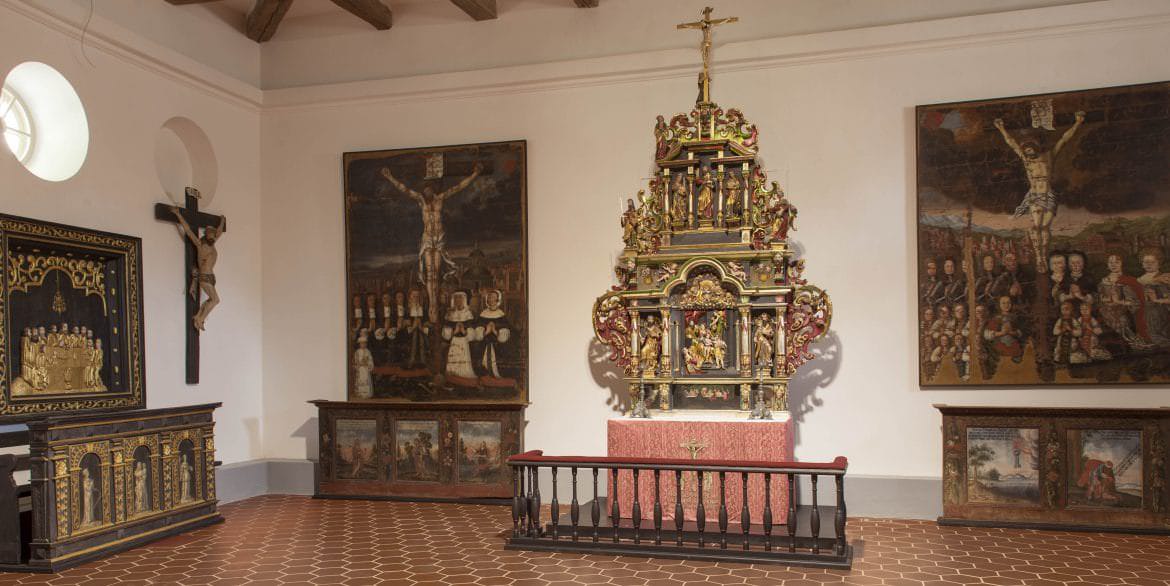The Palace stables have already been used for exhibiting some of the Museum’s sacral art collection, including an altar and a pulpit from Lestene Church, although the latter has since been returned to its original location in the church. Now the stables feature a new exhibition of sacral art from the 17th and early 18th century with Zemīte Church altar as its centrepiece – a woodcarving masterpiece created in the style of Mannerism during the second quarter of the 17th century. Its restoration lasted several years while the grey coating from the 19th century was removed and the initial bright polychromy with silver and gold plates restored. Next to the altar are interior objects from Vāne Church – two epitaphs from the von Henning family with portraits of the church founders, an altar relief “Holy Communion” and a painted confessional. Among exhibited objects are crucifixes from Balgale, Umurga, Stende, Piltene and Iģene Churches, a pulpit from Grieze Church, painted benches from Kaldabruņa Church and a relief “Holy Communion”. Liturgical garments, embroidery, Holy Communion ware and collection plates are displayed inside glass-cases. The Lestene Church organ prospect remains in the stables and will be returned to its original location only after the Government of Latvia will officially pass a resolution to restore the once-famous Lestene Church organ.



